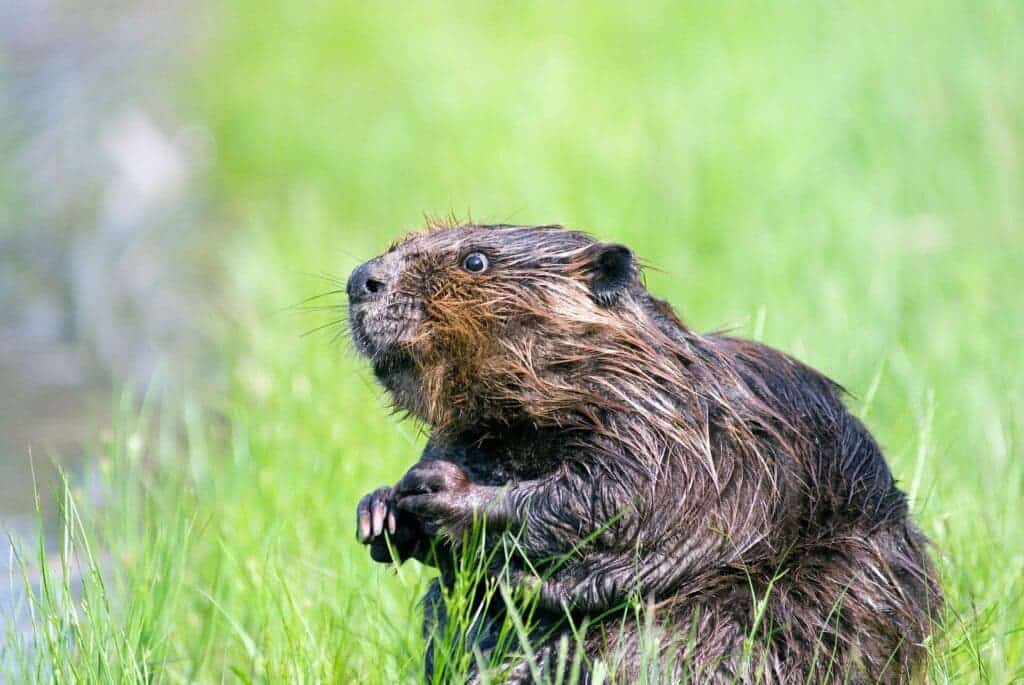We’ve hunted them to near-extinction in most parts of the world, but as it turns out, beavers (genus Castor) are very important for freshwater conservation and ecosystem stability. Using aerial images, researchers found that beavers have helped to create and preserve aquatic and wetland environments in Minnesota, serving as an essential component of the ecosystem.

Beavers are the second-largest rodent in the world, currently living in the forests of North America, South America Europe, and Asia. They are mainly known for their ability to build dams on rivers and streams, which slow the flow of water and raise water levels – creating ponds. They also build shelters (called lodges) where they live.
Beavers get a lot of bad rep for creating “chaos” on freshwater systems — pulling down trees, creating dams, and wreaking havoc on the local environment — but beavers are actually an important ally for ecosystems, and the chaos they produce is generally helpful. Dams and ponds help create and maintain wetlands, replenish groundwater and provide a more consistent water flow in streams. They also store nutrients for plants, improve water quality and reduce erosion of stream banks.
Researchers from the University of Minnesota investigated how beavers affect patterns in surface water dynamics across multiple spatial scales (pond, watershed, and regional scales) over a 70-year period (1948–2017) within five watersheds in northeastern Minnesota, United States. A beaver study at such a scale is unprecedented, they say.
“Although there are many studies on how beavers change ecosystems, the scale of this study is really unprecedented and, as a result, gave us the unique opportunity to understand how beavers transform and engineer ecosystems over long time periods and large spatial scales,” Tom Gable, coauthor of the study, said in a press statement.
Understanding beavers
The team used aerial images to assess temporal patterns of surface water area associated with beaver ponds, the influence of beavers on surface water area, and how this changed in time. They also looked at the variations in ponds occupied and abandoned by beavers and whether patterns in surface water varies across spatial scales.
Previous studies on beavers suggested that their impact on ecosystems doesn’t change across time or space. However, this research showed that beavers’ ecological impact can in fact change depending on the scale. “They can be key drivers of freshwater habitat diversity and promoting ecosystem stability,” Johnson-Bice, lead author, said in a statement.
The researchers also found that beavers are drivers of water retention, which means that restoring their populations to ecosystems they no longer inhabit could be a good way to meet freshwater conservation objectives. The more time beavers are present in an ecosystem, the more abandoned ponds contribute towards storing water, which helps protect the wetlands they inhabit.
Despite the beaver populations in the studied watersheds in Minnesota having big variations in their population size, the water storage was stable across the entire region. This is because changes in beaver population size in one watershed counterbalance the changes in other watersheds, which helped stabilized water storage, according to the researchers.
“We suggest beaver engineering could be used to increase surface water storage and promote freshwater conservation efforts in forested ecosystems. If given the opportunity to recolonize landscapes, beaver-created surface water can reach capacity levels within a relatively short period of time (< 20–40 years),” the team wrote.
The study was published in the journal Ecography.


